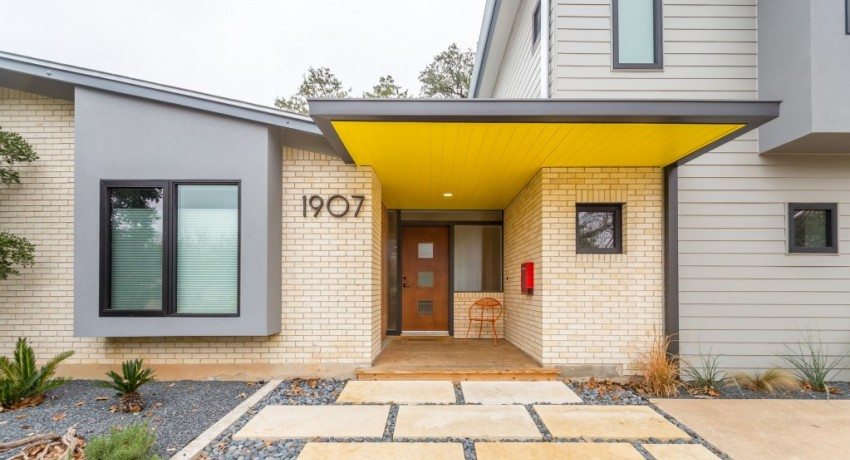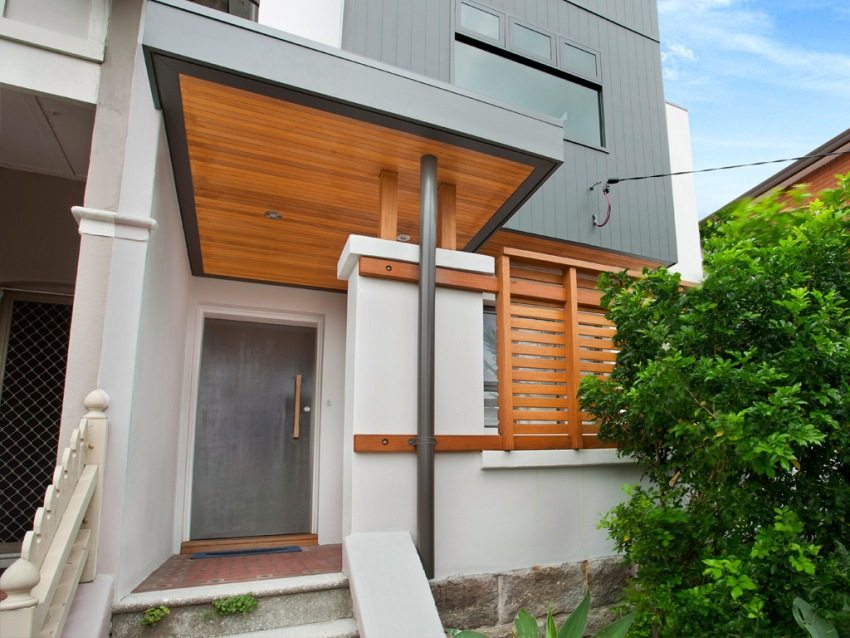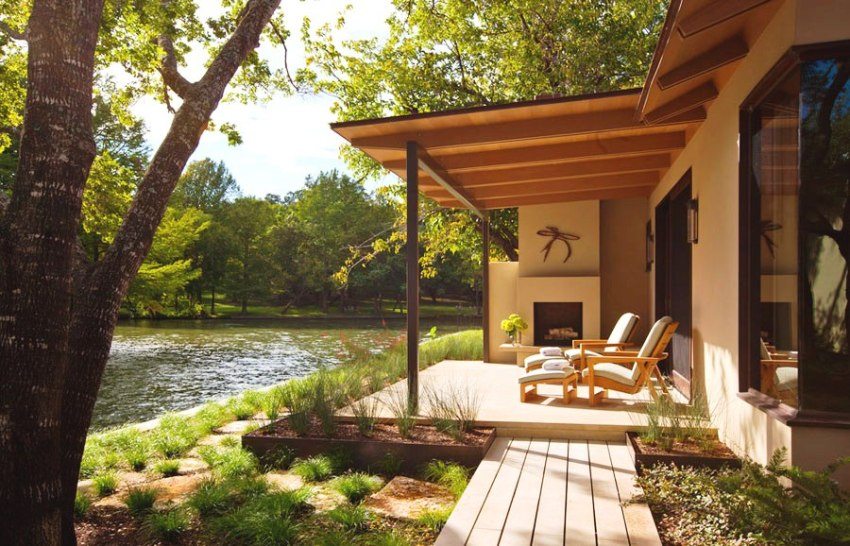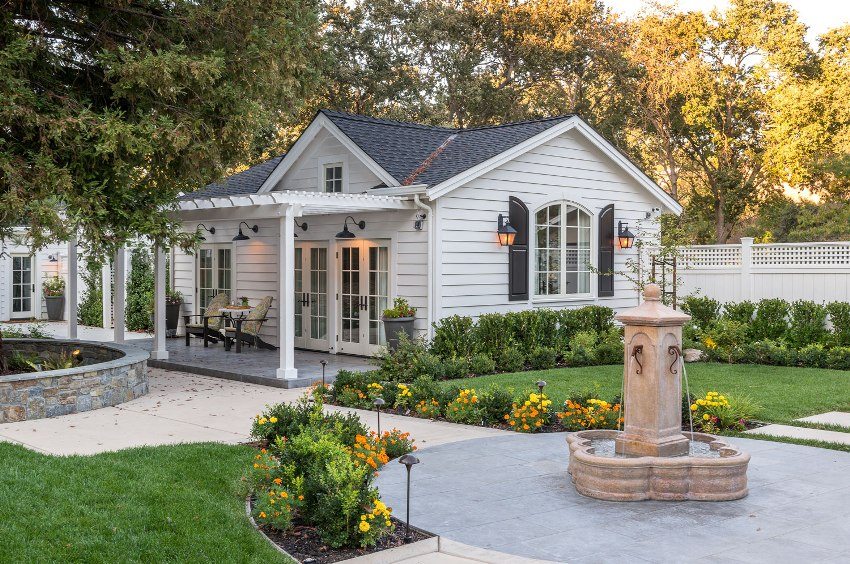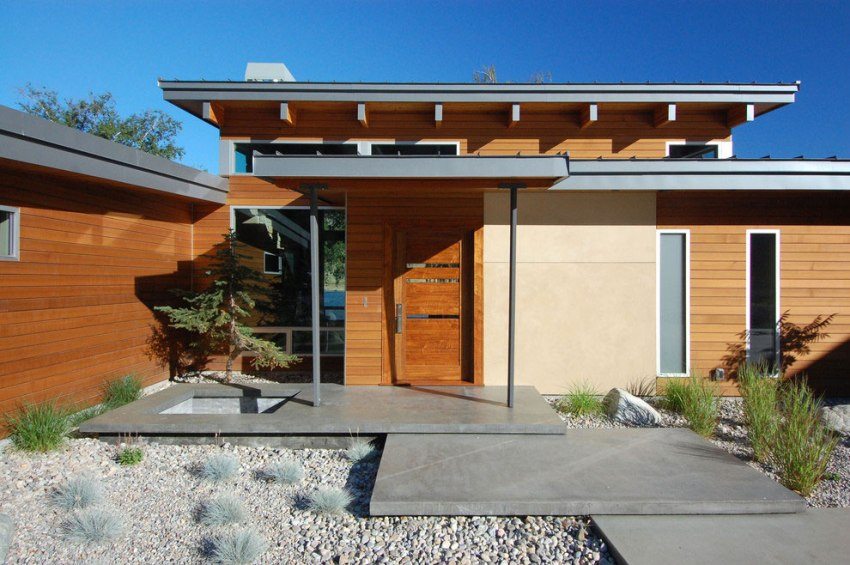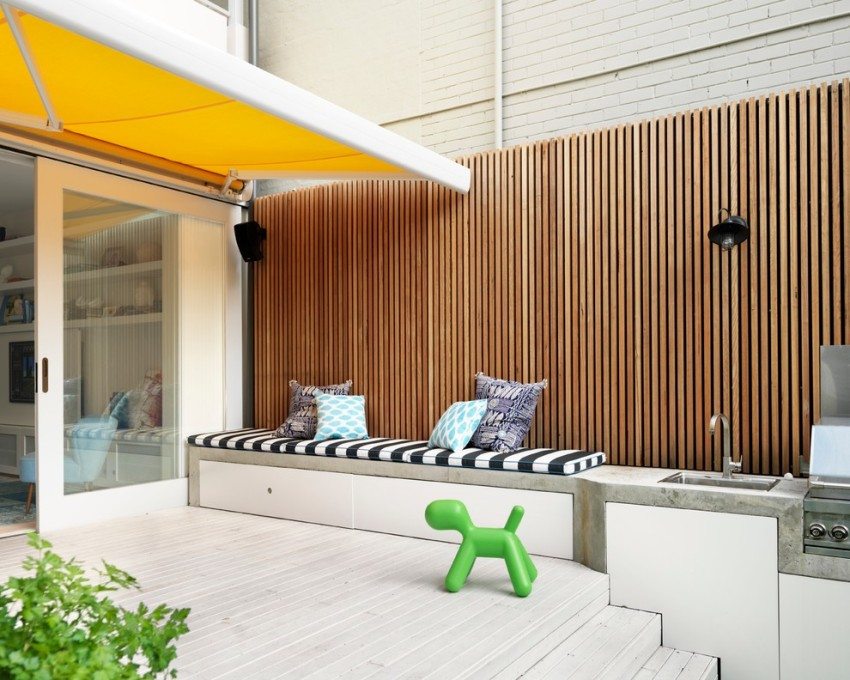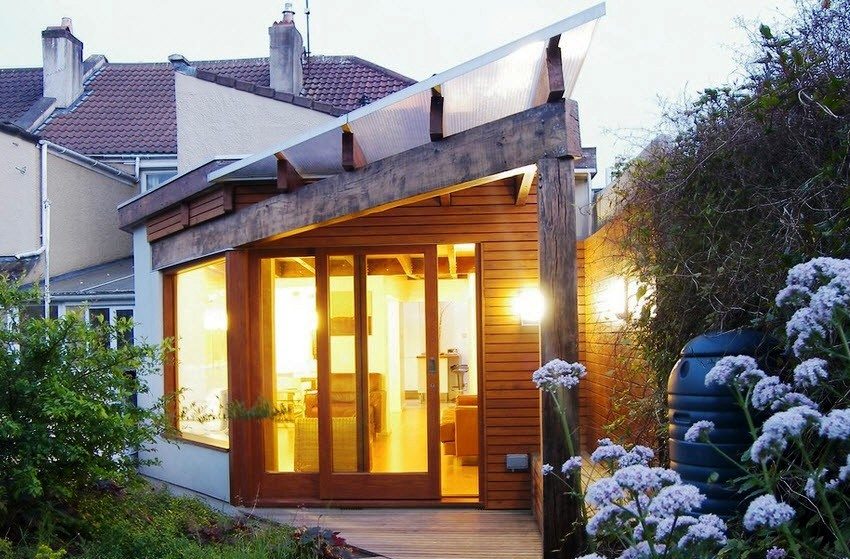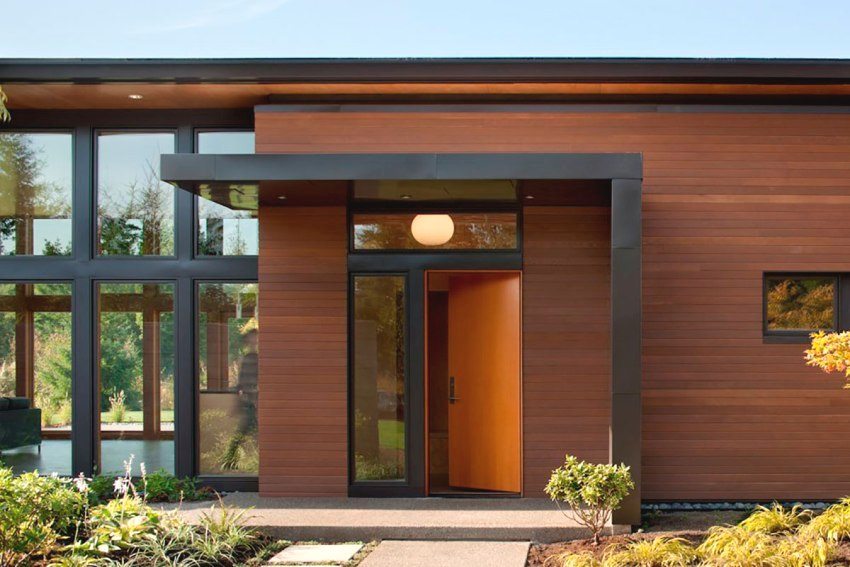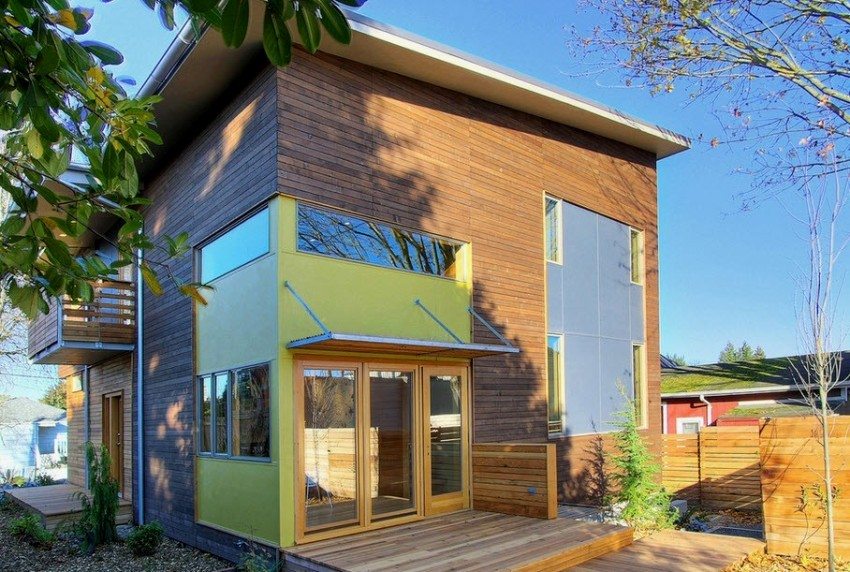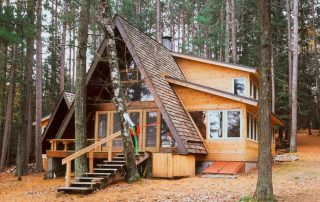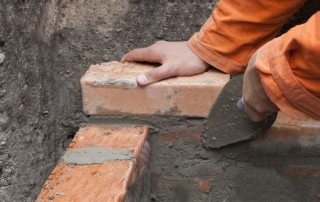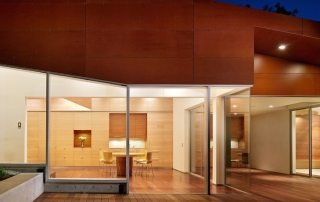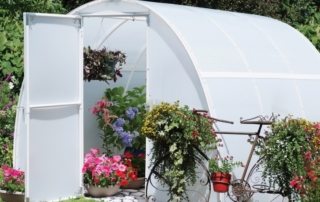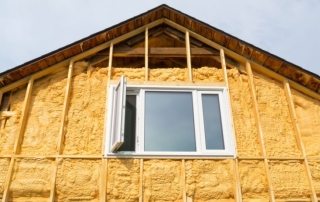The canopy over the porch is not only a practical element of the building that protects the front door and the area around it from bad weather, but also an excellent decorative component facade... It consists of two main parts - frame and cover. Installation of the frame has a lot of subtleties and rules that you need to know about in advance in order to properly install the canopy over the porch of a private house. Photos showing the whole process from start to finish will help you understand the features of the construction of such a building.
Content [Hide]
Forms of awnings and their types
Any awnings can be divided into two types: suspended and supporting. In the first version, the entire weight of the structure is held by the wall to which the frame is attached. Therefore suspended marquises and awnings are best mounted from lightweight materials. Support options are more practical. Thanks to the additional support in the form of support pillars, you can save on space by turning the canopy over the porch into a real terrace. Railings or fences are additionally installed to such structures for more serious protection from bad weather.
The canopies can be different in shape. The most commonly used options are:
- single slope. When arranging them, the slope is placed from the house so that the water can flow down, and snow does not linger near the wall. For a similar shape, a gutter must be installed;
- gable. Canopies of this type are the most common, since their installation is not difficult. The slopes are equipped on both sides porch;
- tent. Rounded or sectioned canopies perfectly protect against unpleasant weather conditions and visually ennoble the facade;
- arched. The canopies made in the form of an arc are mainly made of polycarbonate. This modern material, due to its properties, allows you to create truly unique designs;
- domed (spherical). Sheds of this type are smaller in area and, due to their good streamlined shape, are indicated for arrangement in areas with increased wind loads;
- concave. This design looks quite original with almost any facade. When installing such a structure, you can not be afraid of excessive accumulation of snow.
Basic requirements for the arrangement of awnings
There are certain rules for installing awnings over the porch of a private house.Photos of possible options show the arrangement in accordance with all regulatory requirements. So, when installing such a structure, you need to know the following subtleties:
- the minimum width of the canopy should be at least 1.5 times the door;
- the canopy must be durable and resistant to any wind loads;
- the slope of the slope cannot be less than 20º;
- the design should ideally match the main style of the facade.
Wooden canopy over the porch of a private house. Photos of stages of work
For arrangement wooden no special skills required. To make it you will need:
- timber 5x5;
- board 20x1.5;
- drill;
- saw;
- fasteners.
Stages of work:
- The beam is necessary for the manufacture of support pillars and the frame of the future canopy. The supports are fixed to the base and to the wall using large screws and dowels. It is possible to install a bar in wells with their subsequent filling with cement mortar or ordinary rubble.
- The installation of the rafters is carried out on one side on the support board (or fixed directly on the wall), and on the other side on the supports. To connect the elements of the rafter structure, corners or self-tapping screws for wood are used.
- A crate is laid on top of the resulting frame. The distance between the boards should not exceed 90 cm, and their location should be such that they fall into the middle of the roofing material.
- Now you can start laying the roof. Its parts are also screwed with special screws.
Important! The lathing should be created strictly perpendicular to the rafter system.
Do-it-yourself metal canopy over the porch
When creating a metal canopy, ordinary or shaped metal pipes are used, which are deepened into the ground by about 50 cm, after which they are filled with cement mortar. The rafters can be made of duralumin or metal corner. It is also possible to use a wooden beam. The rafters are laid in such a way that the roof of the finished canopy exceeds the area between the support pillars in area. Beams can be fastened with special fasteners or seams by welding.
Related article:
|
If the covering of the canopy over the porch with your own hands is made from metal profile or metal tiles, the sheets must be overlapped to avoid leaks. Before laying a profile, it is worth taking care of high-quality hydro and vapor barrier.
Polycarbonate canopy without pillars
The canopy made of polycarbonate looks great over the porch of a private house. Photos of the various options presented below demonstrate the uniqueness of the style solutions. Such sheds do not require special conditions, they perfectly withstand both the hottest days and severe subzero temperatures. Due to the lightness of the covering material, they can be freely attached to the wall of the house without additional supports.

Built into the canopy above the porch Spotlights
To make such a canopy over the porch with your own hands, you will need the following tools and materials:
- welding machine, grinder, screwdriver, drill;
- polycarbonate sheets;
- self-tapping screws with thermal washers;
- steel shaped pipes;
- level, tape measure.
Arrangement of polycarbonate canopy. Work stages
- The mounting location is marked on the wall.
- The frame of the future structure is made of shaped square pipes. All elements are welded together.
- Holes are made in the frame, with which it will be attached to the wall.
- The resulting structure is screwed to the wall, then treated with special anti-corrosion compounds and painted.
- Polycarbonate sheets are being installed.
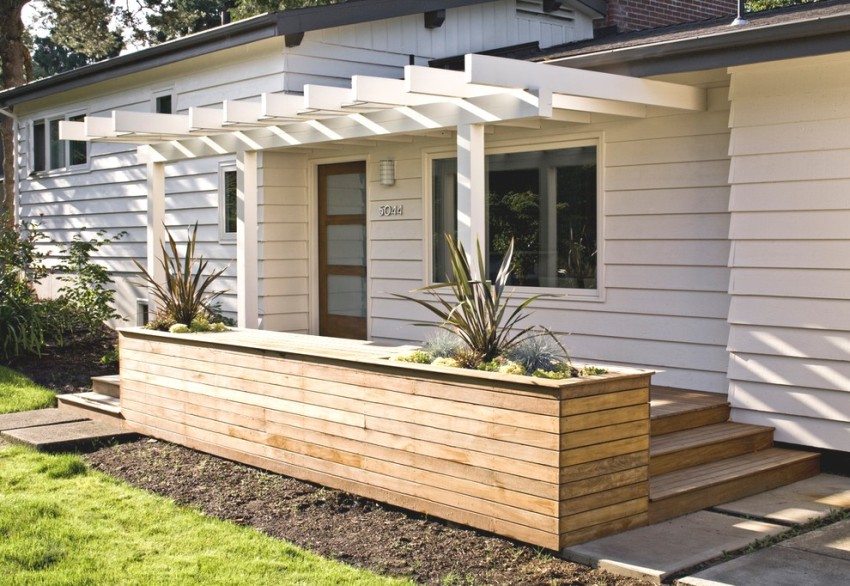
House porch complemented by a flower bed and a wooden canopy
When fixing cellular polycarbonate, you must adhere to some rules. The end sections must be covered with a special sealing tape. The sheets are held together by means of connecting profiles. Mandatory sealing of the junction of the canopy itself and the wall in order to avoid leaks during bad weather.
Important! If an arched structure is planned, then the polycarbonate sheet can be bent to a radius of no more than 70 cm. Otherwise, the sheet may burst.
Polycarbonate installation rules
Another important condition for fixing polycarbonate is to maintain gaps between the sheets of about 3-5 mm. Since such a material has a fairly high coefficient of expansion, it needs additional space to change its geometry on hot days. Another little subtlety. It is recommended to install sheets in a factory protective film, this eliminates the possibility of damage to the material even at the assembly stage.
The frame for such canopies can also be made of aluminum. This material does not corrode, does not require additional processing and bends perfectly. It is ideal for creating rounded designs. Frames made with forging elements look quite interesting.
As you can see, it is not difficult to independently equip a canopy over the porch of a private house. Photos of the stages of work clearly show all the subtleties and features of such structures.
